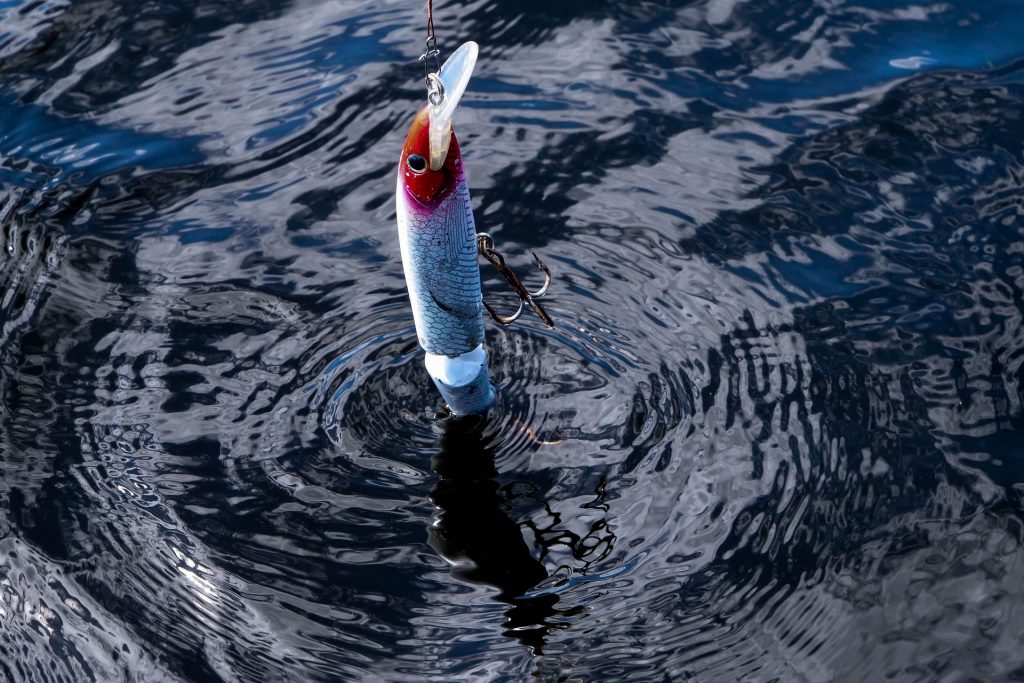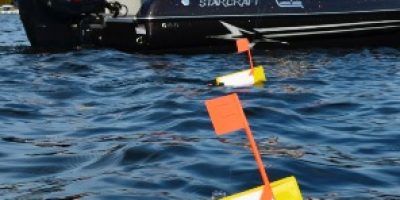If you are new to fishing, you might be looking for different strategies you can adapt to make sure you make the most of your time and resources to get the most fish available. The truth is, there are different strategies you can pick from to improve your chances of catching your target fish fast.
Contrary to how it may look like in pictures, with a man holding his fishing rod out into the water, smiling and looking so satisfied with his fishing adventure, real fishing may require more than just staring at the horizon and waiting for the next fish to bite to your bait. It requires patience, strategy and focus. This is the reason why game fishing became a sport trend that fishing enthusiasts began engaging with.
The difference between “fishing for fun” and “fishing to win” include two basic factors. First, the goal of the activity, and second is the approach that every fisherman uses to succeed in reaching his goal.
Those who ‘fish for fun’ only go out in the water to experience what nature has to offer. He does not feel compelled to follow a certain time-out except for the duration of time he gives himself to be out there waiting for his next catch. Given the luxury of time, he can do all he wants including studying his fishing location closely and being more invested in how he observes the behaviors of the species that he finds within the area. He can also use the time to train himself, to apply the trial-and-error strategy as he tries different ways to catch a target game fish and develop a skill that is critical to determining his satisfaction from this particular activity.
What about ‘fishing to win’?
Game fishing or fishing tournaments are events arranged to invite anglers or fishing enthusiasts to register their names and follow the rules and policies included within the game. They would be going out to the water as individual fishers or as teams, depending on the instructions of the event organizers.
Game fishing is usually timed and is designed to put pressure on the part of the anglers as they aim to catch a single or dual goal of game fishes within a specific location. Often, the game fishes chosen to be caught during these events are fast, agile, strong, and heavy. These characteristics of the fish make them even more interesting and challenging for the anglers to catch.
To win, anglers have to pick just the right strategy and more alert once they set themselves out into the water. As it is, the anglers who join the event would be expected to outpace each other. Usually, the winner is determined by examining the quality of fish that he has caught. From weight to appearance, to the length of the fish, the most beautiful catch gets the first prize. Other awards during these games include the first catch- which honors the efforts of the angler who first makes a catch during the competition, regardless of the quality of the fish that he has caught, so long as it is the game fish being aimed at during the event.
Joining game fishing events is certainly invigorating. Those who wish to join in this type of fishing competition often spend long hours practicing and developing their skills for the big day. Whether you are an amateur or an old-time angler, joining a game fishing event would certainly give you that experience that you will never forget. If you do join one of these events, remember to enjoy it as much as you enjoy the idea of winning.
So how do you prepare for game fishing events?
First, you need to master your strategies of fishing for your target.
Learning how to use a bottom bouncer could help you improve your fishing skills in preparation for that big day.

What is Bottom Bouncing?
Known as the modified process of trolling, bottom bouncing is a strategy that is designed to attract fishes by motivating them to strike a bait that has been set out in the water to catch their attention.
This strategy uses a bottom bouncer. A fishing tool that is L-shaped with a weight in the middle of the long arm of the wire. The weight is often shaped oval and it is designed to keep the wire touching the bottom. When you use a bottom bouncer, you are required to tie the mainline to the notch located at the L-shape wire, then attach the leader to the snap swivel.
This setup will make it easier for you to improve the way you troll through the ground and create a disturbance that is strong enough to create a commotion that will get the attention of your target catch.
As trolling was being modified into bottom bouncing, it was also observed by experienced anglers that this strategy certainly helps in fish location, especially when the area being explored is not familiar to the angler.
Bucktail jigs are often used in bottom bouncing. They are observed to have the most successful rate of results, especially in the manner by which they set the attraction that fishes often respond to immediately.
Others find it more effective to use live or natural baits.
The idea behind the process is that the baits or lures are supposed to hit the bottom of the water and bounce as the line is being dragged by the angler. This action will naturally disturb the bottom and raise sand or mud to the ground and make an impact on the water. This is expected to create a disturbance on the part of the fish, causing it to pay attention to what is happening and find out about it by following the bait.
To keep this motion steady and to create the desired impact on the bottom of the water, you may want to use a bottom bouncer rig to make sure that your bait stays at the right position.
How Does a Bottom Bouncer Work at Its Best?
To make sure your rig does not get too close to the bottom enough to break the whole line, you ought to minimize the chances by which your bouncer gets snagged on rocks and other bottom covers.
Using the right size of weight that will work with the depth of the water in the location you aim to catch your target fish will help you work well with your bottom bouncer. At the same time, you need to mind your speed as you troll with your bottom bouncer. Going too slow will surely have your bottom bouncer stuck and caught in between the rocks. Meanwhile, going too fast may not create the effect that you want on the ground and the water as well. Either way, minding your speed should give you a better pace at improving the way you handle your bottom bouncing activity.
Your Step-by-Step Guide on How to Use a Bottom Bouncer
As mentioned earlier, practicing with bottom bouncing will improve your fishing strategies and give you that chance to win in fishing events. Picking up on these steps noted in this post shall give you an idea of how to use a bottom bouncer and understand the location where you want to fish while getting the attention of your target effectively
FIRST: Using a bucktail jig, start dragging it along the bottom of the water. As you do this, you will feel that dragging motion right from your fishing rod. If you want, you can also use natural bait. Take note that your natural bait should be heavy enough to sink into the bottom of the water and touch the ground to make the desired disturbance.
SECOND: Try to make bucktail jig bounce a little, just enough to make swirls of mud or sand up into the water. This can be done by motioning your rod up and down but at a fair distance and in slow motion. This will create a rather disturbing sensation to the ground and the water without creating unnatural motion that the fish may recognize to be manmade. When this happens, instead of particularly setting the motion of the bottom as it mixes with water to attract the fish, it may send the fish away as they notice the unnatural movement and may immediately assume that they are being caught.
THIRD: after making the few strikes, you can now start dropping the anchor. Once the anchor is set and your boat is already in place, start fishing and jigging. You can also start casting the hook that will particularly be inviting for the fish that you have chosen to catch.
There are different types of hooks designed to make it easier for you to help in keeping your catch within your bait after it bites. Depending on the fish you want to catch, there are some multiple hooks out in the market that provide you a better chance at keeping your catch attached to the bait until you reel the line in. When choosing the best hook to use, you might need to read through and make sure that what you pick would particularly be appealing to your target fish.
FOURTH: Frequently check your bait. At times, there are weeds and other debris that will stick with your bait which will make it harder to attach to the fish that bites into it.
The next thing to understand once you understand how to use a bottom bouncer is to learn how to use surface poppers. Instead of bottom bouncers, surface popping uses spoons.
Catching Walleye through Bottom Bouncing
When using the strategy of bottom bouncing, remember to keep your bait close to the bottom every time. When fishing for walleye, make sure you pick the right bottom bouncer, just enough to make an impact on the ground since walleyes tend to stay on the ground rather than in midwater.
Using bottom bouncers minimizes the chances by which they cover in the bottom is snagged out. So to avoid this, you can use a rig to cover a lot of ground. This will make it easier to entice the walleye to bite into the bait.
When bottom bouncing during the open water season, it is best to use rigs especially for the sake of keeping the walleye interested in the disturbance that you create.
When using bottom bouncers from shore, keep in mind to use shorter leaders. Perhaps three feet long is enough for you to get the effect that you want.
The rod length you can use for bottom bouncing is best measured at 7’6” or a little bit longer depending on where you are aiming to practice this strategy or put it to work to make sure you catch the fish you hope to bring home.

Other Tips for Successful Bottom Bouncing
Here are some tips you might feel is applicable to support your fishing goals through bottom bouncing. If you engage in proper bottom bouncing strategy, you can surely achieve your goals successfully and get the best catch you aim to bring home in the first place.
Here are some tips that you can use to make sure that bottom bouncing would work well for you:
- When you cast your line for bottom bouncing, make sure to throw it at 45 degrees. Allow the weight of your bait to naturally sink towards the bottom of the after. When you feel that the bait is already touching the bottom of the water, let it drift freely along the bottom.
- As the weight of the bait bounces at the bottom of the water, it is important to keep the mainline between the rod and the tip to balance out with each other by making sure that the line is tight. The tight setup will certainly allow you to feel what is happening between the bottom of the water and your bait as the vibration shall send signals to your hand as you hold the fishing rod. This way you will know when to adjust and how to change the angle of your rod to make sure your bait is ticking the bottom of the water.
- How do you know that the bait has been bitten by a catch? The tight tension between your rod and the mainline will allow you to feel when pressure is present thus signaling the bite of the fish into your bait. However, take note too that the said tension should not be too tight to the point of making it easier for the fish to cut the line with their strong pull.
- Proper bottom bouncing allows for fish baits to drop from between one foot to twenty feet bottom deep.
- When bottom bouncing in medium-sized rivers, the line should be between two to 6 feet long. As the river bottom gets deeper, be sure to lower down your line and feel through it to know if it is already touching the ground or if you need to make any more adjustments.
- Bottom bouncing could be best used in shallow and small pockets of life. Nonetheless, this strategy has also been tested in larger pools and resulted in catching fish in great numbers. In the end, the success you get from bottom bouncing relies so much on your capacity to feel the pressure and tension through your rod and how well you know about the location where you are fishing. This means that it is most likely that during your first try, you might not be able to get any success from your bottom bouncing strategy. Nonetheless, don’t be disheartened. Keep in practicing and you will realize that within a few tries, you will already get the hang of this strategy and you will certainly catch more fish in the long run.
Key Takeaways
As noted in this discussion on how to use a bottom bouncer, it is clear that there is more to fishing than simply throwing the bait out in the water and waiting for a fish to bite into it.
It requires that an angler or an interested fisher be more open to embracing a better understanding of the location he wants to explore and the behavior of the fishes within the area.
Considerably, bottom bouncing entails the fishers to engage much better with the natural environment they want to connect with as they seek to catch their target fishes. Disturbing the bottom of the water through creating a bouncing motion with the use of bait, the sand and mud are affected, therefore creating an interesting point of attraction that most bottom dwellers take immediate notice of.
From experience, anglers find this strategy motivating enough to raise the interest of the fishes to engage with the fishing activity and bite into the bait because the motion at the bottom of the water has motivated then to feed or to find something to eat.
Satisfaction from learning how to use a bottom bouncer to catch your target fish in either freshwater or saltwater location can only be realized if you take the time to practice in making sure that this strategy would work well for you and your goal; may it be to ‘fish for fun’ or to ‘fish to win’.


